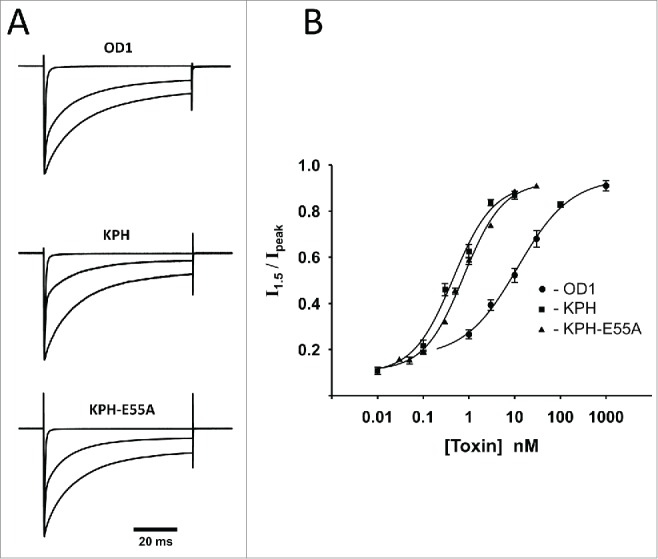Figure 1.

Wild-type OD1 and its analogs KPH and KPH-E55 slow the decay phase of whole-cell Na+ current in a concentration-dependent manner. (A) Three sets of normalized current traces represent responses to step depolarization from a holding potential of −100 mV to 0 mV. Each set consists of a trace in the absence of the toxin (upper fast declining current), at approximately EC50 concentration (middle trace) and saturating concentration. The concentrations were as follows: OD1: 0, 10 nM, 300 nM; KPH: 0, 300 pM, 10 nM; and KPH-E55A: 0, 300 pM, 10 nM. (B) Concentration–dependence of change in inactivation rate of whole-cell Na+ currents. The ratio of whole-cell value taken at 1.5 ms after the peak occurrence to the peak current was taken as an estimate of inactivation rate. Experimental points were fitted with a logistic equation with the following parameters: OD1: EC50 = 12 ± 3 nM, n = 0.7 ± 0.2; KPH: EC50 = 0.4 ± 0.1 nM, n = 1.0 ± 0.3; and KPH-E55A: EC50 = 0.77 ± 0.08 nM, n = 1.0 ± 0.1.
